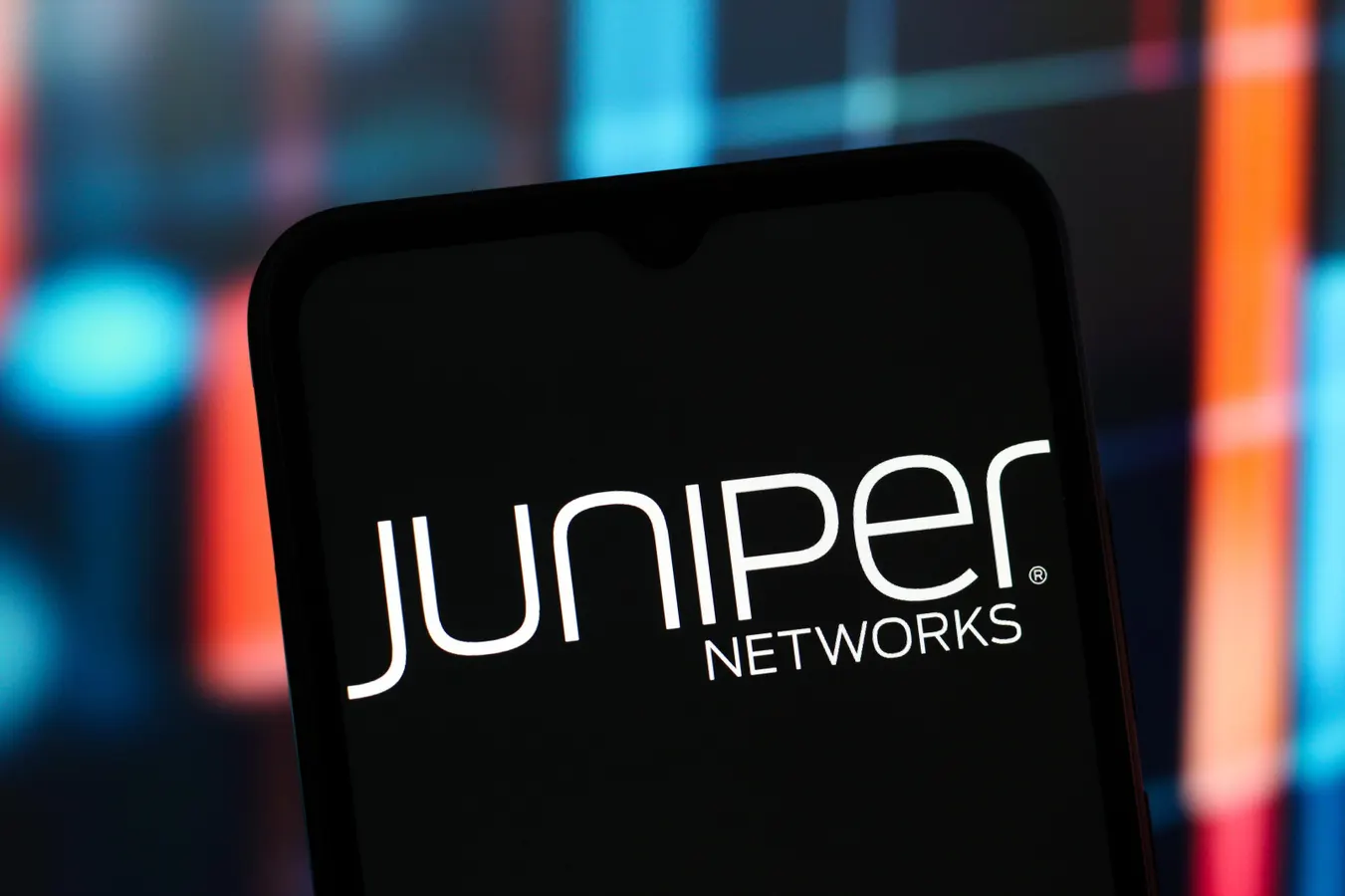By Contributor Thomas Fuller Trefis Team
CANADA – 2025/06/28: In this photo illustration, the Juniper Networks logo is seen displayed on a … More smartphone screen. (Photo Illustration by Thomas Fuller/SOPA Images/LightRocket via Getty Images)
SOPA Images/LightRocket via Getty Images
Juniper Networks (NYSE: JNPR) shares rose to $39.95 after the U.S. Department of Justice (DOJ) decided to settle its antitrust lawsuit, removing a significant barrier to Hewlett-Packard Enterprise鈥檚 (NYSE: HPE)$14 billion all-cash acquisition of Juniper. As part of the settlement, HPE will sell its Instant On wireless networking division and provide limited access to Juniper鈥檚 Mist AI source code, which is vital to its WLAN offerings. Although this alleviates the main regulatory hindrance, the agreement still awaits final court approval and a 60-day public commentary phase, pushing the expected closure to Q3 2025. Those looking for growth with reduced volatility compared to individual stocks may want to investigate the High Quality portfolio, which has outperformed the S&P 500 with returns surpassing 91% since its inception.
A Year in the Making
Announced in early 2024, this acquisition is crucial to HPE鈥檚 strategy of broadening its AI-driven networking presence and competing more assertively with Cisco Systems (NASDAQ: CSCO). The DOJ initially sought to prevent the merger in January, claiming it would lessen competition by allowing Cisco and HPE to hold a combined 70% share of the U.S. networking hardware sector. Juniper responded by asserting that the DOJ鈥檚 definition of the market was incorrect and that the merger would promote鈥攔ather than restrict鈥攊nnovation. Under the terms of the settlement, HPE agreed to divest Instant On and license Mist AIOps technology to competitors, a rare concession in technology mergers and acquisitions.
What This Means for Investors
Upon the completion of the merger, Juniper shareholders will receive $40 in cash for each share. With the stock currently trading just under that value, potential gains are limited unless there are unforeseen delays in the deal. For HPE investors, the focus will shift to integration and execution. Analysts predict that the merger will enhance earnings within the first year, with synergies driven by scale and Juniper鈥檚 AI-driven networking tools, which will be integrated into HPE鈥檚 Aruba Networking division.
Strategic Stakes
Although some critics contend that the merger diminishes competition in the market, HPE CEO Antonio Neri views it as a strategic advancement, reinforcing HPE鈥檚 position across AI data centers, cloud ecosystems, and telecom networks. For enterprise clients, the result provides a broader product range and improved AI capabilities, albeit at the expense of decreased vendor diversity. Much will depend on HPE’s success in integrating Juniper and how effectively competitors take advantage of the partial unbundling of Mist AI.
HPE Valuation Check: Still Looks Cheap, But for a Reason
Despite trading at just 0.9x sales and 20.2x earnings鈥攕ignificantly below the S&P 500鈥檚 3.1x and 26.9x鈥擧ewlett Packard Enterprise鈥檚 exorbitant price-to-free cash flow ratio of 252.7 highlights poor cash efficiency. While revenue has increased 4.5% annually over the past three years and 11.8% over the last year, profitability remains thin, with operating and net margins of only 7.0% and 4.6% over the previous four quarters, far under the S&P 500鈥檚 14.9% and 11.6%.
MORE FOR YOU
Bottom Line
With the DOJ hurdle resolved, Juniper stock is effectively set at $40. The attention now shifts to court approval, the execution of divestitures, and signs of synergy in future earnings. For investors, the most significant returns are likely to arise from HPE鈥檚 performance post-merger.
Investing in a single stock can carry risks. We employ a risk assessment framework while developing the 30-stock Trefis High Quality (HQ) Portfolio, which has a record of consistently outperforming the S&P 500 over the last four years. Why is that? As a collective, HQ Portfolio stocks yielded better returns with reduced risk compared to the benchmark index; providing less of a roller-coaster experience, as indicated in HQ Portfolio performance metrics.
Editorial StandardsReprints & Permissions
